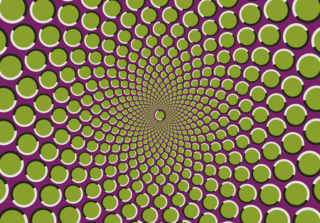A real number line is a continuous line that extends infinitely in both directions. Each point on the line represents a real number. The real numbers on the line are arranged in sequential order. Any two real numbers on the line can be compared, and we can determine which number is greater or smaller than the other. The line can be divided into segments.
Suppose we take a segment on the real number line, let us say between two integers, 1 and 2. The segment is finite but infinite in the number of real numbers it contains. There are countless real numbers between 1 and 2. However, there is no next number on this segment. By this, we mean that if you pick any number between 1 and 2, you can always find another number between them. There is no limit or endpoint to the number of real numbers between the two integers. Thus, there can never be a next number in this segment.
The concept of the next number is not applicable to the real number line. The set of real numbers is complete, meaning that there is no need for any new number to fill in any gaps or provide solutions to any problems. Any two real numbers on the line are separated by an infinite number of other real numbers. This implies that there exists no next number or any number missing from the real number line. Each number on the line is unique and independent.
Furthermore, the real number line is dense, which means that every point on the line can be approached arbitrarily close by a sequence of real numbers. This property further emphasizes that there is no next number on the real number line. For any point on the line, we can approach it arbitrarily close by finding real numbers that are infinitely close to the point. Since there exists no smallest positive number on the real number line, there is no next number.
there is an end to the real number line segment or not?
At first glance, it may seem that the real number line goes on forever without any end. This idea aligns with the concept of infinity, which is an unbounded quantity or magnitude that extends indefinitely without a limit or boundary. Mathematically, we can represent infinity by the symbol ∞, which denotes an infinitely large or small value that cannot be expressed or reached in the usual sense. In this sense, the real number line appears to be infinite both to the left and right of zero, with no end in sight.
However, upon further analysis, we realize that there are limits to the real number line, albeit they may not be intuitive or straightforward. For instance, we can define bounds or intervals on the real number line that contain only a finite or countable number of real numbers. For example, we can define the interval [0,1], which contains all real numbers between zero and one, including both endpoints. In this case, the interval [0,1] is bounded, meaning it has an upper and lower limit, which are 1 and 0, respectively.
Furthermore, there are situations where the real number line is incomplete or non-existent in certain spots. For instance, we can consider the imaginary or complex number system, which extends the real number line by introducing the imaginary unit i, such that i^2=-1. The complex number system includes both real and imaginary numbers, and it can be represented as a two-dimensional plane with a horizontal axis for the real part and a vertical axis for the imaginary part. However, there are points on the complex plane where the real part is zero, and only the imaginary part exists. Such points are called purely imaginary or vertical lines and are not part of the real number line. Therefore, the real number line is incomplete or does not exist in such cases.
Another situation where the real number line segment is incomplete is in the case of limits or approaches to infinity. For example, we can consider the function f(x)=1/x, which approaches zero as x approaches infinity. In this case, the real number line seems to have an end or limit at zero, but we can still consider values greater than zero by taking the limit as x approaches infinity, which yields a value of zero. Therefore, the real number line segment has a limit or end but extends infinitely beyond it.

